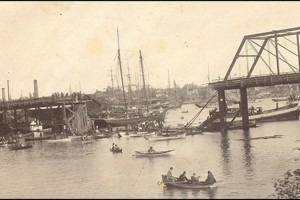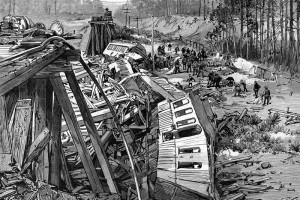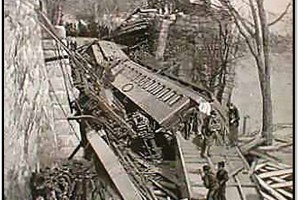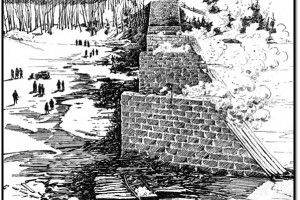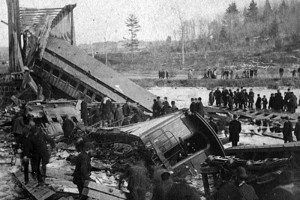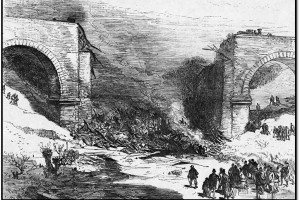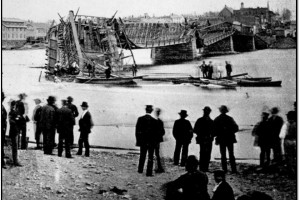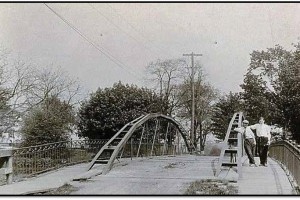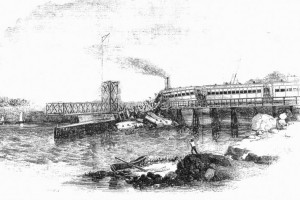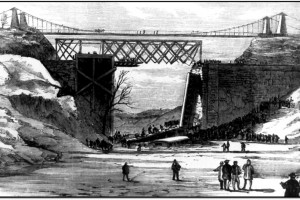The Point Ellice Bridge crossed the Upper Harbor from Victoria, British Columbia, to Esquimalt. The first wooden pile bridge at the site was built in 1861 and was replaced in 1872. This was replaced by an iron bridge built in 1885 by the San Francisco Bridge Company for regular carriage, wagon, and pedestrian traffic. It was turned over to the City of Victoria by the Provincial Government in 1891. Engineering News described the bridge:
…Review Category : Historic Structures
Blackshear, Georgia, is located about 90 miles southwest of Savannah. The Savannah, Florida, and Western Railroad (formerly the Atlantic Gulf Railroad) ran southwesterly from Savannah to Bainbridge and opened in December 1867 after starting construction as early 1859. About one mile northeast of Blackshear, the line crossed the Alabaha (sometimes called the Hurricane) River on an iron bridge that was flanked by long wooden trestles as was common at the time to keep costs low. The trestle that failed was reported to be 300 feet long and 25 feet above the ground. The trestle had been updated two years prior to the disaster with the Engineering News reporting,
…The Boston & Providence Railroad built the Dedham Branch running southwesterly from Boston towards Dedham, Massachusetts. The 120-foot-span Bussey Bridge was located six-miles out of Boston and crossed South Street in Roslindale at a 45-degree skew angle. Originally a wooden bridge, sized for two tracks but only carrying one, it sat on masonry abutments. It was called the “Tin Bridge” as the wood was covered with tin to minimize the threat of fire. As the wood decayed, one of the wooden trusses was replaced with an iron Whipple Truss bridge, and the deck structure was supported by this hybrid bridge. In 1876, the railroad decided to replace the remaining wooden truss with another iron truss. Engineering News described the bridge as follows,
…The Central Vermont Railroad was chartered on October 21, 1843, to run from Burlington on Lake Champlain to Windsor on the Connecticut River via St. Albans and Montpelier, the state Capital. It was opened to traffic at various times in 1849. It crossed the White River, a tributary of the Connecticut River about four miles north of White River Junction between Woodstock and West Hartford. A major high bridge was built across the river consisting of four spans of 140 feet and a short span of 70 feet, with a total length of approximately 630 feet on a large skew to the river. It was a 26-foot-deep, single track, double Towne lattice deck bridge, made of plank and strengthened by heavy timber arches with the piers and abutments built of granite. It was covered on the sides and top to protect the trussing from the weather. Its top was also covered with iron plates to minimize the chance of fire. From the track to the surface of the ice (water) was 42 feet, with the bottom of the trusses 16 feet from the river’s surface. The bridge was considered by many to be a fine example of bridge design and construction.
…
